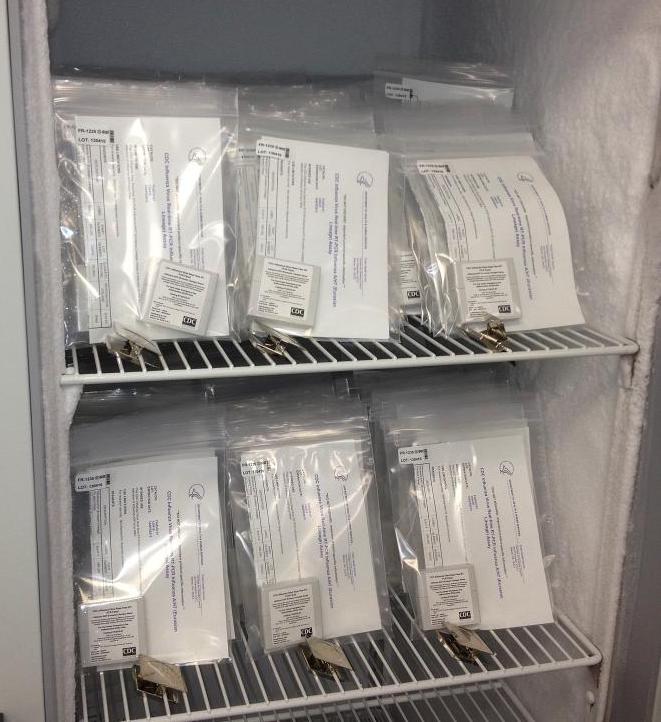What’s the deal with contact tracing?

Testing and Contact Tracing
Yesterday the Sacramento Bee reported an escalation in the tension between California’s governor and the counties in the Sacramento region over loosening the pandemic restrictions. The California Pandemic Roadmap allows counties to move forward at a faster pace than the state as a whole, but requires them to attest that they meet the state’s readiness criteria.
One of the criteria is that counties must have a minimum number of contact tracers, based on population (according to the Bee, 15 per 100,000.) This required number is greater than what my area’s counties have at this time, so the governor is withholding permission to reopen more swiftly.
Why? What is the deal with contact tracing? And how does it relate to coronavirus testing?
The Dance
In my last post (Endgame #5), I explained that we are entering the phase Tomas Pueyo calls “the dance.” The dance is the time when we face a constant risk that SARS-CoV-2 coronavirus infections will grow exponentially, even if the current number of cases is small and manageable. The risk remains as long as the virus is still out there, and many people are susceptible. If at any time we collectively return to our “normal” way of living as we were in February, coronavirus infections would double, then double again, etc.
I know that many people have the opinion that the overall mortality of SARS-CoV-2 infection will end up being 1% or less. I further understand that some people think this is tragic but acceptable compared to the cost of containment. But if you are one of those people, don’t completely reject the dance. Keep in mind that speed matters. More people will die of COVID-19, and more people will die of other causes, if coronavirus cases surge beyond the capacity of our health care system. Our goal during the dance is to slow down the rate of infection enough to maintain a simmer, not a boil, while protecting the most vulnerable populations—and allow our hospitals to do their job. Releasing all restrictions at this time would threaten that goal.
The dance ends with herd immunity (or disappearance of the virus, which is not likely as I explained in Endgame #1). Once enough people are resistant to infection (at least 70% of us), the virus will have trouble finding a new host, and infections will decline on their own. We will reach herd immunity with an effective, widely distributed vaccine or by natural infection or a combination of both.
Experimenting with NPIs
All the conversation and debate about “reopening” is about how to dance successfully. If we throw off all the behaviors we’ve begun, we’re guaranteed to lose: COVID-19 will surge (timeline would vary from place to place). The challenge is to choose which non-pharmaceutical interventions (NPIs) to keep, and which we can relax, while still keeping the epidemic in check.
Decisions about NPIs should be based in science, but science can’t make the decisions. We value some things more than others. For example, I value schools highly. I would choose to ban conferences, weddings, theaters, concerts and the like if that gave enough epidemiologic leeway to reopen K-12 education. (I don’t know if that is a real trade-off. It’s an example of the kind of science-based but value-determined decision we must make.)
The problem is, it’s impossible to know precisely how effective any particular NPI is in the real world. NPIs include things like handwashing; 6-foot distancing; mandatory mask wearing; staying at home; banning gatherings of 50+ people; open/close various stores and businesses and beaches and parks; etc. Science can estimate how much each of these will help to slow down disease transmission, but only in real life will we see how successful is a particular set of NPIs.
The dance is a high-stakes experiment of how to slow the virus at the least inconvenience and cost to ourselves.
How do we know if we’re doing the dance right?
The definition of failure is a crush of COVID cases in our hospitals. Can we use that as a sign that we got it wrong with our NPIs, and we need to do better? No, because by then it’s too late. There’s a long lag (weeks to months) between our actions to slow the virus, and the time when patients arrive in the ER.
Instead, we must monitor our progress by testing. Lots of testing. That’s testing for the virus, not the antibody test. This coronavirus test is usually performed with a nasal swab, and it detects the presence of SARS-CoV-2 RNA. It tells you whether you are currently infected. By systematically testing people in a community, we can learn how many are infected and whether that number is changing over time. Is the epidemic stable, slowing, or growing? Well-planned, widespread testing tells us whether we need to change our dance before the situation gets out of control.
Staying a step ahead is really important. The scary thing about exponential growth is how it can catch you off guard. Pretend the epidemic is doubling every day (not unreasonable, as we recently witnessed doubling times of 1-3 days in many places.) On a Monday, a hospital might have 10 coronavirus patients, and everybody is congratulating themselves. On Friday they would have 160. After just one week, the following Monday they would have over a thousand patients. Those patients were infected weeks ago. Changing behavior going forward would impact the case load weeks in the future, not tomorrow, when it would double again no matter what we did.
Contact tracing
There is a second reason to do a lot of coronavirus testing. In a lockdown, we quarantine everybody. Wouldn’t it be better to only isolate people who actually have the virus, or who had a recent known exposure to it? Why yes it would! Then everyone else could go about their business. Widespread coronavirus testing would let us do that, as long as it is tied to contact tracing.
This is the strategy that was used to fight the pandemic so successfully in South Korea and Taiwan. Here’s how it works.
You test a lot of people for coronavirus. You test them regularly, because a negative test today could become a positive test tomorrow if a person gets infected in the meantime. (Hence the governor’s criteria include capacity for a lot of tests.) If someone tests positive, then they need to isolate themselves so they don’t infect anybody else.
Equally important, they may already have infected other people. To stop the exponential growth, those contacts must be identified, notified, and quarantined. That’s the job of contact tracing teams. Contact tracers figure out who had sufficiently prolonged or intense contact with the contagious person to justify quarantine or other milder precautions.
If testing and tracing could be done instantaneously and perfectly, no other NPIs would be needed.
Of course testing and tracing cannot be done perfectly. It’s done better in some places than others. Testing and tracing is another tool in our toolbox of NPIs.
Issues:
- Widespread testing must include people who seem to be healthy, not only people who have symptoms. Data from Taiwan show that COVID is most infectious before and within 5 days of start of symptoms. (Other data on asymptomatic transmission here.) If you only test people who are feeling sick, you miss most of the at-risk contacts.
- The system has to be fast. If contacts aren’t found and quarantined within 1-2 days of their exposure to a contagious person, it’s hardly worth the effort to do it at all.
These challenges are a particular problem for the United States, because setting up comprehensive testing and tracing systems takes time and it takes commitment from both the government and the people. It’s well known that the US has been short on diagnostic tests. In some Asian countries like Taiwan and South Korea, MERS and the original SARS shook them awake. For years they have prepared for the next pandemic, and they built the administrative and technical infrastructure to do contact tracing really fast and with a lot of automation. The US never built such an infrastructure, so our contact tracing must be labor-intensive: interviewing people and doing old-fashioned detective work. In those other countries, digital tracking via mobile phones, surveillance via CCTV, and credit card tracking make the process of contact tracing highly efficient.
Given enough time, would the US deploy a comparable system? Would Americans accept it? I don’t know. {For a deep dive on this and many other issues related to contact tracing technology and privacy, read Pueyo here.}
The California Roadmap
I hope you now have a better understanding of the issue of contact tracing and testing, and why it’s part of the California roadmap.
Key points:
- We are starting “the dance”
- We will maintain some NPIs to keep the epidemic at a simmer rather than a boil
- Widespread testing for the coronavirus tells us whether we are succeeding, or losing ground in this effort
- Anyone who tests positive must isolate
- Contacts of anyone who tests positive must be identified and when appropriate, quarantined to interrupt the chain of transmission (putting out a small fire before it becomes a big one)
- Testing and contact tracing must be done swiftly, or there’s no point
- The US lacks a technology-based system for contact tracing, making it labor intensive
- When done right, mass testing and contact tracing can substitute for social distancing, and let people resume normal activities without losing control of the epidemic
- Without contact tracing, we must rely on NPIs that affect everyone whether they’ve had an exposure or not
As with many issues at this stage of the pandemic, the conflict between governor and counties is about something specific (mandatory number of contact tracers) but the disagreement is really about something deeper. How much risk is a community willing to accept during the dance? Or conversely, how much is a community willing to sacrifice to be “safe”? These are questions that science can’t answer.
—–
Addendum for reader question:
A reader (RH) asked me to explain why “testing is key” even though “antibody tests are worthless because of the high rate of false results.” Part of the answer should be clear now: testing for coronavirus RNA is critical to monitor the success of our dance. This type of test is actually really specific. If you test positive, you definitely have viral RNA in you. (The test does miss some infections, though. False negatives are a bigger problem with this test than false positives.) The antibody test is a different test with a different purpose; I wrote about it here. Antibody tests are not used in contact tracing. RH is correct that there have been major problems with the accuracy of the antibody tests, particularly with false positives. I won’t explain positive predictive value here, but you can look it up. It’s related to disease prevalence. At this time, for some of the antibody tests, the positive predictive value is only about 50%. That means, if you got a positive, there’s only a 50/50 chance that you actually have antibodies against coronavirus SARS-CoV-2. This is a helpful article on the problems with testing.
Amy Rogers, MD, PhD, is a Harvard-educated scientist, novelist, journalist, and educator. Learn more about Amy’s science thriller novels, or download a free ebook on the scientific backstory of SARS-CoV-2 and emerging infections, at AmyRogers.com.
Sign up for my email list
0 Comments
Share this:



0 Comments